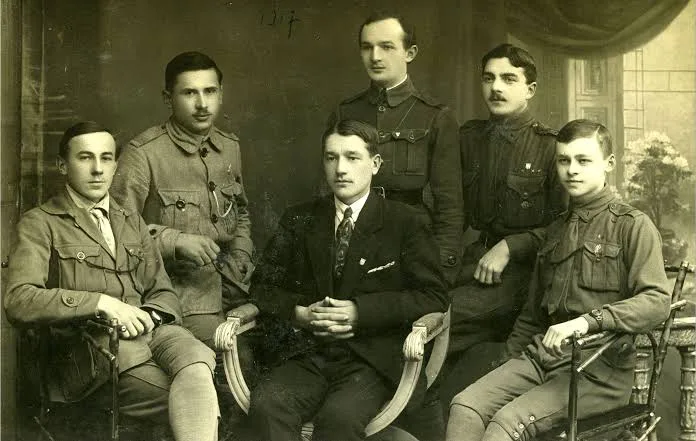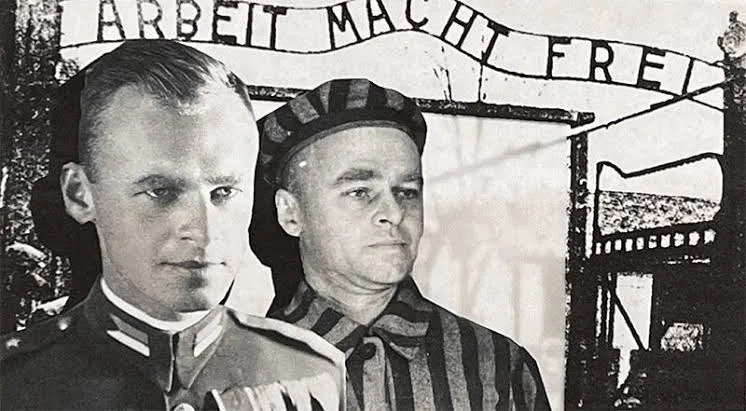In the annals of World War II history, few stories rival the bravery and selflessness of Witold Pilecki, a Polish resistance fighter who deliberately allowed himself to be captured by Nazi forces and sent to Auschwitz concentration camp. Pilecki’s daring mission aimed to sabotage the camp’s operations from within and gather crucial intelligence on Germany’s atrocities, which he would later smuggle out to the Allies.
Early Life and Resistance
Born on May 13, 1901, in Olonets, Russia, Witold Pilecki grew up in a Polish family and developed strong patriotic sentiments from an early age. Following Germany’s invasion of Poland in 1939, Pilecki joined the Polish resistance movement, determined to fight against the Nazi occupation. His bravery and leadership skills quickly earned him a prominent role in the resistance.
The Auschwitz Mission
In 1940, Pilecki deliberately allowed himself to be captured by Nazi forces during a raid in Warsaw. He was subsequently sent to Auschwitz concentration camp, where he adopted the alias “Tomasz Serafiński.” Once inside, Pilecki began gathering intelligence on the camp’s operations, documenting atrocities, and building a network of allies among fellow prisoners.
Pilecki’s reports, known as the Witold’s Reports, provided detailed information on the camp’s layout, prisoner population, and the brutal treatment of inmates. He also smuggled out information about the Nazis’ mass killings, including the use of gas chambers.

Smuggling Reports to the Allies
Pilecki and his fellow resistance fighters managed to smuggle reports out of Auschwitz, which were then sent to the Polish government-in-exile in London and other Allied forces. These reports provided crucial evidence of Germany’s war crimes and helped raise awareness about the atrocities committed in concentration camps.
Escape and Continued Resistance
In 1943, after nearly three years in the camp, Pilecki managed to escape from Auschwitz. He continued to fight against the Nazi occupation, participating in the Warsaw Uprising in 1944. Following the uprising’s failure, Pilecki was captured by German forces and sent to prisoner-of-war camps.
Post-War Persecution
After the war, Pilecki was arrested by the Polish communist government in 1948, who were influenced by the Soviet Union. He was accused of espionage and anti-communist activities, and in 1948, Pilecki was sentenced to death. He was executed on May 25, 1948.
Legacy and Recognition

Witold Pilecki’s heroism and sacrifice have been recognized in recent years. In 1990, after the fall of communism in Poland, Pilecki was posthumously rehabilitated, and his legacy began to receive the recognition it deserved. Today, Pilecki is celebrated as a national hero in Poland, and his story serves as an inspiration to people around the world.
Conclusion
Witold Pilecki’s story is a testament to the bravery and selflessness of those who fought against Nazi tyranny. His daring mission to infiltrate Auschwitz and smuggle out reports of Germany’s war crimes demonstrates the power of individual resistance in the face of overwhelming oppression. As we reflect on Pilecki’s legacy, we honor the countless individuals who risked their lives to fight for freedom, dignity, and humanity during one of history’s darkest periods.
Sources:
- “The Auschwitz Volunteer: Beyond Bravery” by Józef Garliński
- “Witold Pilecki: The Man Who Defied the Nazis” by Anna Pilecka
- “Pilecki’s Reports” by the Pilecki Institute
This comprehensive report sheds light on the remarkable story of Witold Pilecki, a Polish resistance fighter who risked everything to expose the atrocities committed at Auschwitz and fight against Nazi tyranny. His legacy serves as a powerful reminder of the importance of courage, sacrifice, and resistance in the face of oppression.
